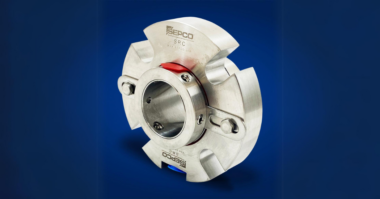Reciprocating plunger pumps are a type of positive displacement pump that drives liquid at high pressures in a variety of industrial applications. They operate by creating changes in pressure using a moving component known as a plunger which, on its outward motion, draws fluid into the chamber through the suction valve; then on its inward motion, opens up the discharge valve and pushes the fluid out a delivery pipe at a rapid velocity. Working with the plungers are the pump valves, plunger packing and stuffing box components to ensure optimal performance.
While proper pump installation and routine maintenance can keep your reciprocating plunger pump lasting for many years, these pump suction systems commonly face a few typical issues. Some problems are preventable through regular maintenance checks, while others, such as routine wear and tear, are unavoidable but can be mitigated as soon as they are detected.
One such complication is cavitation. In the event of a pressure drop, liquid rapidly converts to vapor; the sudden collapse of a vapor bubble creates microscopic, high-velocity liquid blasts through the pump. This phenomenon can damage the surface, leading to corrosion and, ultimately, pump failure.
Other complications can include:
- Acceleration Pulsations
- Frictional Loss of Liquid Flow
- Reduced Pressure at Pump Inlet
- NPSH
One practical pump maintenance process is to look for early indicators of suction failure. Knowing how to spot them can save time and money on maintenance repairs and production halts.
For example, no liquid discharge is often caused by low net inlet pressure or a negative pressure on the stuffing box. This issue signals that there may be obstructions in the suction and delivery lines or that the valves are not properly opening and closing.
To learn more about suction system failure signs like the following and the other complications, please download their eBook, Suction System Problems and How to Prevent Them:
- Excessive Noise and Vibration
- Low Capacity Output
- Excessive Heat
- Excessive Power Consumption
- Stuffing Box Leakage
Or, to discuss your specific needs with a TPCI expert, contact them today
Contributor: Sam Kelton




Comments